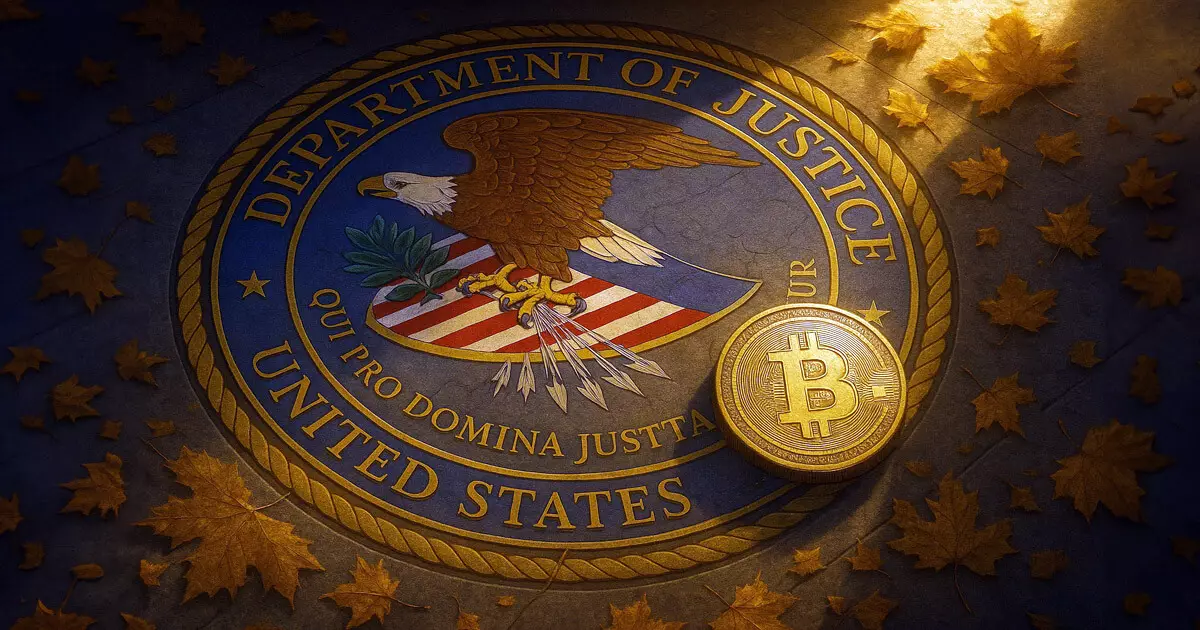In the rapidly evolving landscape of digital assets, the compensation mechanism for fraud victims has come under intense scrutiny. The United States Department of Justice (DOJ) rightly acknowledges that current asset valuation methods are archaic and inadequate. This realization came to the forefront after numerous crypto platform collapses, including high-profile failures such as FTX, Celsius, and Voyager. It’s startling to witness a system that ties compensation to the outdated value of digital assets at the time of claim filing rather than their current market realities. Victims of digital asset fraud are being shortchanged, which is an unjust outcome for those already impacted by financial malfeasance.
The failures of these platforms have highlighted a critical flaw in the justice system’s approach toward digital assets. Investors who lost their holdings in 2022, when Bitcoin hovered around the $20,000 mark, may be eligible for compensation that is far less than they would have received had they simply retained their investments. By January 2025, Bitcoin’s price skyrocketed to unprecedented heights—over $108,000—a staggering rise of more than 500%. Yet, as it stands, payouts are calculated based on values that no longer reflect the reality of the market, leaving many victims in a regrettable financial lurch.
A Regulatory Blind Spot
The DOJ’s internal memo highlights an essential issue: current regulations limit compensatory recovery to the dollar value of the asset at the time of the fraud. This regulatory blind spot effectively strips victims of any potential upside that stems from market fluctuations and appreciation. The notion that victims should bear the brunt of market volatility while being pinned down by outdated regulations is both an affront to justice and a failure of our financial system to adapt alongside technological innovation.
As an advocate for center-right principles, I cannot condone a system that seems designed to protect the status quo at the expense of individual investors. It reflects a broader systemic issue within our regulatory framework—a clinging to rigid structures that fail to evolve in response to new economic realities.
Reform is Urgently Needed
Financial advocates such as “Mr. Purple,” a prominent figure representing FTX creditors, have vociferously called for reforms that recognize digital assets as legitimate financial instruments under bankruptcy law. It is absurd to view digital currencies through the same outdated lens used for traditional assets. Digital assets embody unique characteristics that should be taken into consideration during legal proceedings, especially when the lives and finances of real individuals are on the line. The DOJ’s current approach is not just outdated; it is inherently unjust.
To remedy these shortcomings, the DOJ has evidently initiated a review through its Office of Legal Policy and the Office of Legislative Affairs. They’re examining potential regulatory updates aimed at addressing distinct challenges presented by digital assets. However, the clock is ticking, and the need for genuine, transformative action is immediate.
Shifting Focus: The DOJ’s Approach
Concurrently, the DOJ is realigning its focus away from prosecuting legitimate crypto businesses towards cracking down on clear criminal activities like scams and market manipulation. This strategic pivot, which involves disbanding the National Cryptocurrency Enforcement Team, suggests that the agency intends to focus its resources on more blatant forms of misconduct in the sector. While this is a commendable adjustment, we cannot overlook the necessity for a robust framework that encompasses both legal scrutiny and victim compensation.
The DOJ’s participation in President Trump’s Working Group on Digital Asset Markets is another step toward a more sophisticated regulatory landscape. By providing legal minds to contribute to white papers on potential legislation, there lies hope that the voice of victims will translate into tangible policy changes that protect future investors.
While the DOJ has initiated critical discussions around the compensation framework for digital assets, a more substantial commitment to real reform is urgently needed. We are witnessing how outdated systems can profoundly impact individuals’ lives, and there is little room for complacency when the stakes involve the financial well-being of countless Americans. The time for action is now; victims of digital asset fraud deserve compensation that accurately reflects the value of their investments, not the outdated figures tied to a bygone era.













